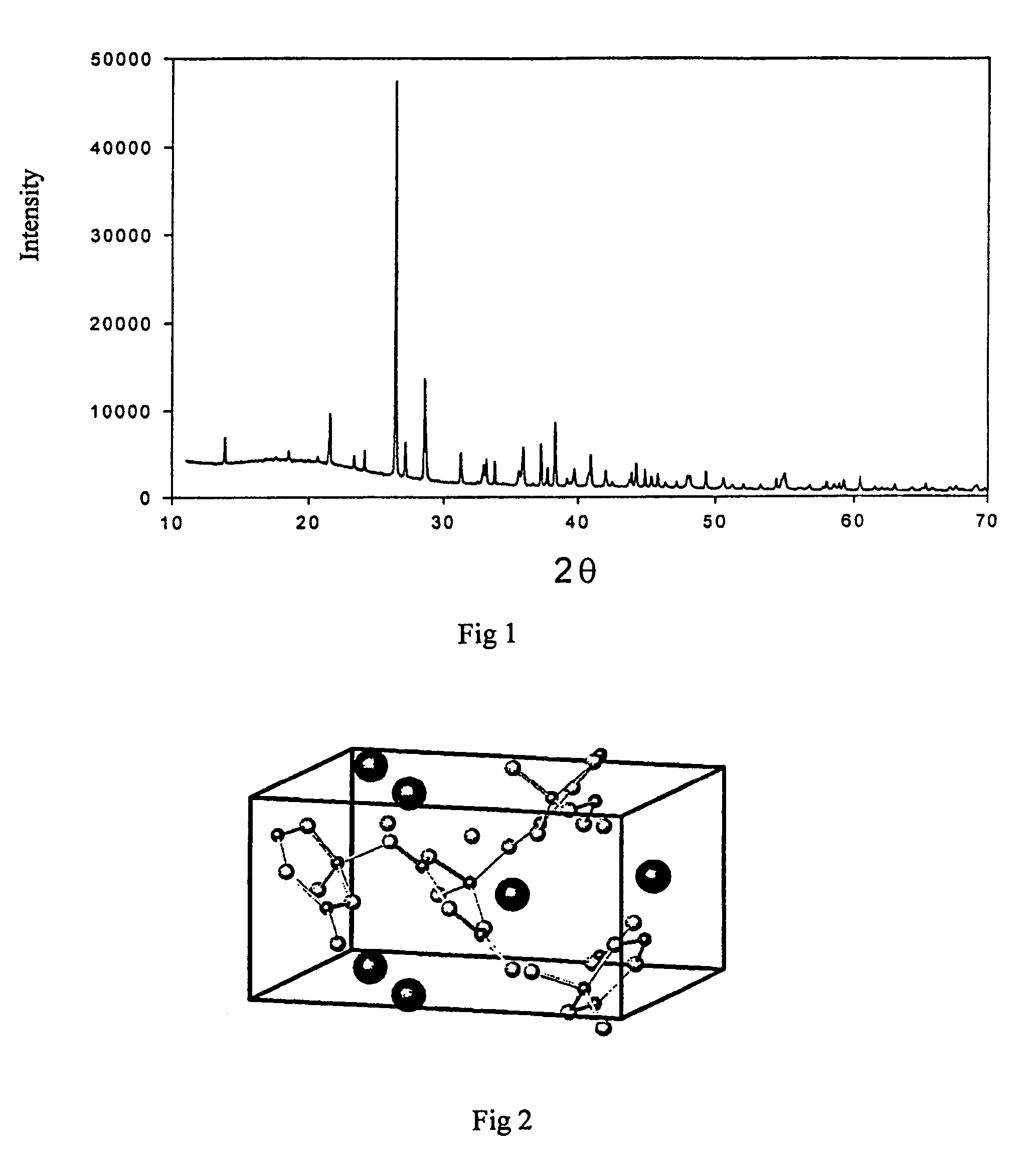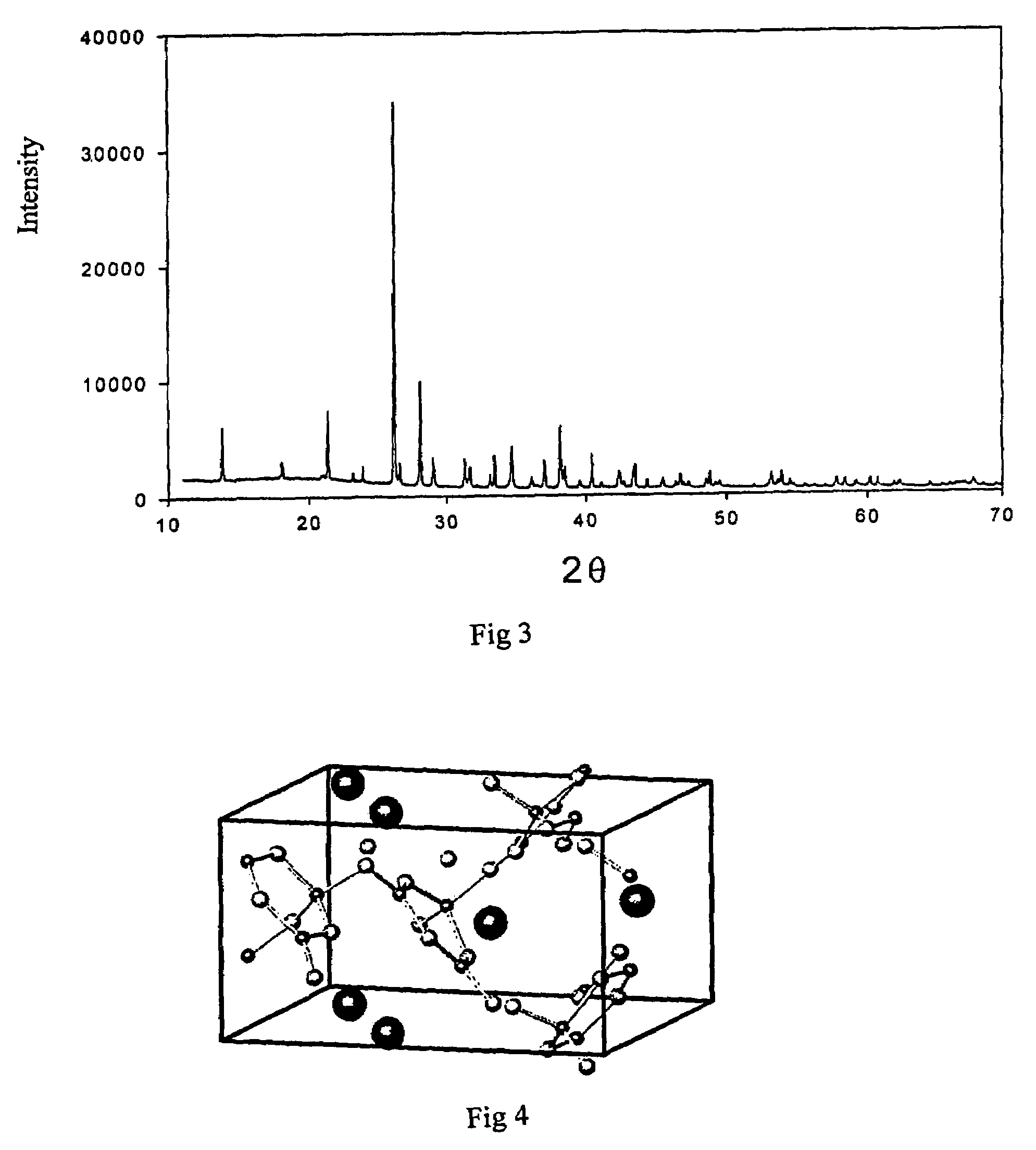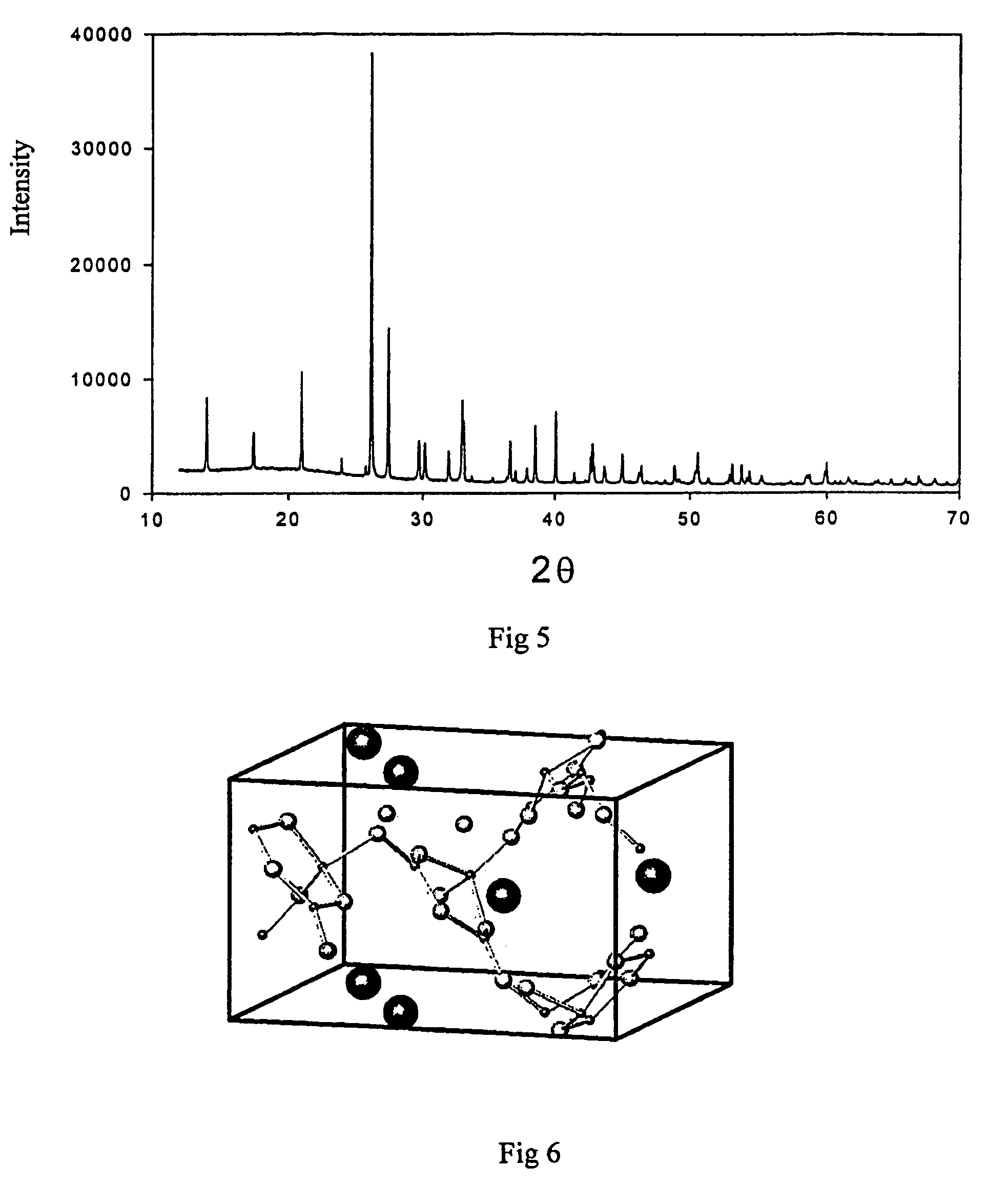Cesium-rubidium-borate nonlinear optical crystal and its growth method and applications
a nonlinear optical crystal and csr technology, applied in the growth process of crystals, polycrystalline materials, instruments, etc., can solve the problems of inability to meet the requirements of high-power laser applications, and inability to emit laser lights with fixed frequencies. , to achieve the effect of improving hygroscopic properties and adjustable refractive indices
- Summary
- Abstract
- Description
- Claims
- Application Information
AI Technical Summary
Benefits of technology
Problems solved by technology
Method used
Image
Examples
example 1
[0036]Preparation of the cesium-rubidium-borate nonlinear optical crystal represented by the chemical formula CsxRb1-xB3O5 (x=0.1):
[0037]Cs2CO3, Rb2CO3 and H3B2O3 were weighed according to the proportion Cs:Rb:B=0.1:0.9:3 (molar ratio). After being mixed homogeneously, the mixture was packed into a platinum crucible and placed into a resistance-heated furnace. The reacting temperature was predetermined to be 680° C. The temperature was decreased slowly to room temperature after 72 hours, and then the cesium-rubidium-borate nonlinear optical crystal represented by the chemical formula CsxRb1-xB3O5 (x=0.1) was obtained. The X-ray powder diffraction pattern of the obtained sample is shown in FIG. 1, and the corresponding crystal structure is shown in FIG. 2, which belongs to the P212121 space group with cell parameters a=8.2383 Å, b=10.074 Å, c=5.4302 Å.
example 2
[0038]Preparation of the cesium-rubidium-borate nonlinear optical crystal represented by the chemical formula CsxRb1-xB3O5 (x=0.4):
[0039]Cs2CO3, Rb2CO3 and H3B2O3 were weighed according to the proportion Cs:Rb:B=0.4:0.6:3 (molar ratio). After being mixed homogeneously, the mixture was packed into a platinum crucible. The reacting temperature was 700° C. The temperature was then decreased slowly to room temperature after 24 hours. The X-ray powder diffraction pattern of the obtained sample is shown in FIG. 3, and the corresponding crystal structure is shown in FIG. 4, which belongs to the P212121 space group with cell parameters a=8.3230 Å, b=9.9883 Å, c=5.5935 Å.
example 3
[0040]Preparation of the cesium-rubidium-borate nonlinear optical crystal represented by the chemical formula CsxRb1-xB3O5 (x=0.9):
[0041]Cs2CO3, Rb2CO3 and H3B2O3 were weighed according to the proportion Cs:Rb:B=0.9:0.1:3 (molar ratio). After being mixed homogeneously, the mixture was packed into a platinum crucible and placed into a resistance-heated furnace. The reacting temperature was 750° C. The temperature was then decreased slowly to room temperature after 10 hours. The X-ray powder diffraction pattern of the obtained sample is shown in FIG. 5, and the corresponding crystal structure is shown in FIG. 6, which belongs to the P212121 space group with cell parameters a=8.4673 Å, b=9.4863 Å, c=6.0132 Å.
PUM
| Property | Measurement | Unit |
|---|---|---|
| temperature | aaaaa | aaaaa |
| temperature | aaaaa | aaaaa |
| temperature | aaaaa | aaaaa |
Abstract
Description
Claims
Application Information
 Login to View More
Login to View More - R&D
- Intellectual Property
- Life Sciences
- Materials
- Tech Scout
- Unparalleled Data Quality
- Higher Quality Content
- 60% Fewer Hallucinations
Browse by: Latest US Patents, China's latest patents, Technical Efficacy Thesaurus, Application Domain, Technology Topic, Popular Technical Reports.
© 2025 PatSnap. All rights reserved.Legal|Privacy policy|Modern Slavery Act Transparency Statement|Sitemap|About US| Contact US: help@patsnap.com



